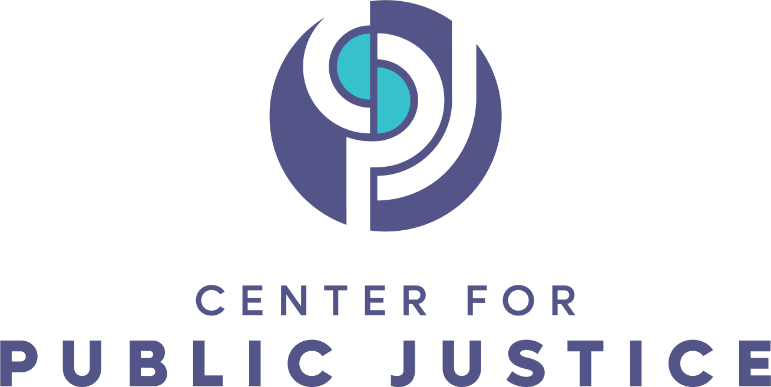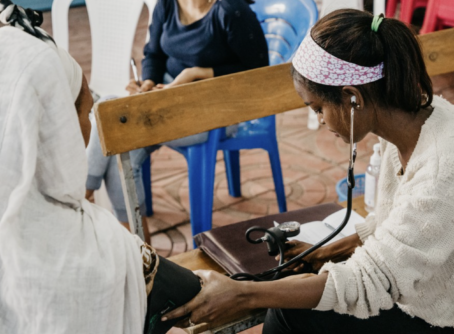
This article is part of Shared Justice’s Opportunity for Transformation series running throughout June. The series will explore one of the most urgent areas for reform within the juvenile justice system: juvenile probation. It will introduce readers to juvenile probation, its flaws, and the opportunities for government and civil society to create a juvenile justice system that is more equitable, effective, and restorative.
BY ESTHER LAGERWEY
In a recent Center for Public Justice Instagram Live interview, Steve Bishop, a senior associate at the Annie E. Casey Foundation, emphasized that juvenile justice reform should be a “moral imperative” for people of faith. Community-based organizations, including faith-based organizations and houses of worship, have an opportunity to contribute to transforming the juvenile justice system into one that is more just, equitable, and restorative. One of the most critical areas for reform, which Bishop discussed in depth, is juvenile probation.
Juvenile probation is an alternative to confinement that keeps a young person in his or her community under the supervision of a probation officer who ensures that the young person complies with a list of conditions determined by a judge. If those conditions are not met, the young person can be punished through means such as being put in residential custody, charged fines and fees, or potentially even being incarcerated.
Juvenile probation, as it currently functions in many localities, is broken. Young people of color are disproportionately given probationary sentences, and instead of helping youth turn around from bad behavior, probation often becomes the first of many interactions with the court system. Probation can even take youth away from their communities and families by placing them in residential facilities far away from the places and people they know.
The Annie E. Casey Foundation reports that 60 percent of youth should be diverted and only a small percentage of youth should actually be incarcerated or on probation. According to the National Juvenile Defender Center, diversion “refers to any program that is an alternative to the filing of a court petition and which keeps the youth from entering the juvenile court system by referring the child to counseling or other social services.” Studies show that diversion efforts are far more effective in reducing recidivism among youth than typical probation programs are.
As Christians, we know that everyone is made in the image of God and worthy of dignity and respect. The Christian faith also emphasizes the important principles of restoration and forgiveness, which ought to inform how we think about the purpose of something like probation. The juvenile probation system as it stands does not always promote the well-being and flourishing of the youth in it. Probation often separates families and can lead to increased confinement, since even minor probation violations can result in a young person being sent to a facility outside of their neighborhood. The Center for Public Justice (CPJ), in its Guidelines on Government, states that the government should seek public justice through all of its actions. CPJ further states that “Upholding public justice for a political community must include responsiveness to a variety of interrelated principles, such as distributive justice, which holds for the way government allocates benefits, and retributive and restorative justice, which hold for the way government punishes offenses and seeks restitution and reconciliation.”
While government has an essential role in reforming juvenile probation and shifting to diversion models, these efforts necessitate the involvement of civil society institutions like churches, nonprofits, and faith-based organizations in roles that each can execute best. In fact, juvenile probation reform is most effective when partnerships are formed between government — in this case the courts system — and civil society organizations. Civil society institutions generally understand the needs of their local community better than the government, and they may already have programming that is based on the family and restorative justice.
Across the country, several counties have reimagined juvenile probation and are leading the way in innovative approaches that center around the family and partnerships with the local community. This article focuses on two such examples: Lucas County, Ohio and Pierce County, Washington.
TRANSFORMING PROBATION ON A LOCAL LEVEL
Lucas County is located in the northwestern part of Ohio and includes the city of Toledo. Since 2014, Lucas County has been a probation transformation site, according to the Annie E. Casey Foundation’s Probation Transformation Initiative of 2014, which seeks to put probation research into practice. Through its multifaceted approach to juvenile probation, Lucas County has successfully cut the number of youth placed in residential and correctional facilities in half. This outcome came as a result of overhauling their probation system and making diversion programs the default response for delinquent youth.
One of the main programs that Lucas County has formed is called the Misdemeanor Services Unit (MSU). MSU engages the family and refers youth to services and supports in the community. Instead of mandating a long list of technical activities that youth must adhere to—like probation does—Lucas County offers programming, such as mentorships, that teaches valuable skills and offers needed services to youth.
Recognizing the importance of involving parents and families in probation and diversion programs, Lucas County partnered with Center of Hope Family Services, a nonprofit faith-based agency experienced with working in the juvenile court system, to run the Family Navigators Program. The Family Navigators Program helps families navigate the juvenile court process which can be confusing, frustrating, and overwhelming. This program pairs parents who have previously had children in the juvenile justice system with parents who currently have children in the system. Unlike the courts system, these parents are able to give firsthand advice as well as a deeper understanding of the process and its challenges.
In addition to the Misdemeanor Services Unit and the Family Navigators Program, Lucas County has several other community partnerships that probation officers have formed over the years. Such programs include afterschool programs, athletic leagues, camps, and youth activities sponsored by art museums, volunteer organizations, and church groups. In addition, there are several restorative justice programs as well. Lucas County believes in a diversion process where youth can willingly be involved in these programs that change behavior and create further opportunities.
Pierce County, Washington, offers another example of a county committed to probation transformation. Pierce County is located south of Seattle on the western side of Washington state and includes the city Tacoma. In 2017, Pierce County began to overhaul juvenile probation and create diversion programs that are the default for most youth offenses rather than strict probation.
One of Pierce County’s programs, Opportunity-Based Probation (OBP), incentivizes good behavior through a points system. This incentive-based supervision system is centered around adolescent brain science research that shows how youth react better to desirable incentives rather than potential punishments. Youth help to create short- and long-term goals, and their progress is recognized with tangible rewards such as bus passes, gift cards, and even a shorter probation period. This program also has a family engagement component that leads to fewer crisis events at home.
Another key component to Pierce County’s overhaul of the juvenile probation system is their Family Council, which consists of 12 parents whose children have previously been or are currently involved in the juvenile probation system themselves and who thus can help advise the probation department, conduct family focus groups, family seminars, and be parent advocates. Probation officers in Pierce County have also created relationships with several community-based organizations that give youth the opportunity to learn skills and build community through skateboarding, boat building, bicycle programs, and an evening center. Often, the probation officers will even participate in these activities with youth to build trust.
The juvenile justice systems in both Lucas County, Ohio and Pierce County, Washington have recognized the value of partnerships with community-based and faith-based organizations in seeking juvenile probation reform. Through programming that incentivizes positive behavior and development, prioritizes family engagement, and connects young people with their community, these two counties can serve as a model for other jurisdictions throughout the country. People and institutions of faith have an opportunity to respond to the moral imperative that Steve Bishop noted and work towards the flourishing of young people, their families, and their communities.
Esther Lagerwey is a student at Calvin University in Grand Rapids, Michigan and is majoring in Political Science and German with an Urban Studies Policy minor. She was the Shared Justice Program Assistant intern at the Center for Public Justice during the Spring of 2021.






